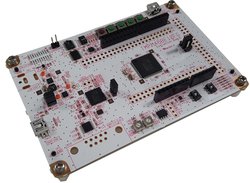Important changes to repositories hosted on mbed.com
Mbed hosted mercurial repositories are deprecated and are due to be permanently deleted in July 2026.
To keep a copy of this software download the repository Zip archive or clone locally using Mercurial.
It is also possible to export all your personal repositories from the account settings page.
Homepage
This example is known to work great on the following platforms:
- AdBun-M46B over Wi-Fi and using SD card.

Follow the Quick-Start instructions: https://cloud.mbed.com/quick-start
Example functionality¶
This example showcases the following device functionality:
- On simulating user button click, increment Pelion LWM2M button resource.
- Allow the user to change the state of the board LED from Pelion LWM2M led_state resource and PUT request.
Instructions to use this program with Mbed CLI¶
1. Import the application into your desktop:
mbed import https://os.mbed.com/teams/Toshiba/code/pelion-example-common cd pelion-example-common
2. Install the CLOUD_SDK_API_KEY
mbed config -G CLOUD_SDK_API_KEY <PELION_DM_API_KEY>
For instructions on how to generate your API key, please see the documentation.
3. Initialize firmware credentials (done once per repository). You can use the following command:
mbed dm init -d "<your company name in Pelion DM>" --model-name "<product model identifier>" -q --force
If above command do not work for your Mbed CLI, please consider upgrading Mbed CLI to version 1.8.x or above.
4. Compile and program:
mbed compile -t <toolchain> -m <TARGET_BOARD>
(supported toolchains : GCC_ARM / ARM / IAR)
5. Connect Pins used with Wifi shield (ESP8266) and SD card shield:
Please refer following configuration defined in mbed_app.json.
"esp8266.rx" : "PE1",
"esp8266.tx" : "PE2",
"esp8266.cts" : null,
"esp8266.rts" : null,
"esp8266.rst" : "PC2"
"sd.SPI_MOSI" : "PD2",
"sd.SPI_MISO" : "PD1",
"sd.SPI_CLK" : "PD3",
"sd.SPI_CS" : "PD0",